The Sustainable Livelihood Programme run by WOTR and supported by Axis Bank Foundation was implemented in 66 villages in Jharkhand and 21 villages in Telangana from 2019 to 2023. It focused on providing support for income generation to families through integrated community-based interventions and assistance in agriculture, livestock, non-timber forest produce and water resource development. Shikha Sharma provides the background and tells us how the programme helped marginalised communities
Perched on a hilltop and surrounded by deep forests in the interiors of Jharkhand lies Koyengsar. A hamlet of 44 households, this is where Kuwari Bhengra has lived with her family of seven all her life. Bhengra, 49, belongs to the Munda Community, an indigenous tribe from the south Chotanagpur Plateau who have historically lived off the forest. Cutoff from the rest of the world, ‘development’ came to her village only in the early 2010’s in the form of a pucca (solid/ permanent) road. Until then, her village had little access to the outside world. “Gaadi dekhi nai thi humne (we had never seen a car). The sight of a car still scares me, and I prefer walking than sitting in one to this day,” she says.
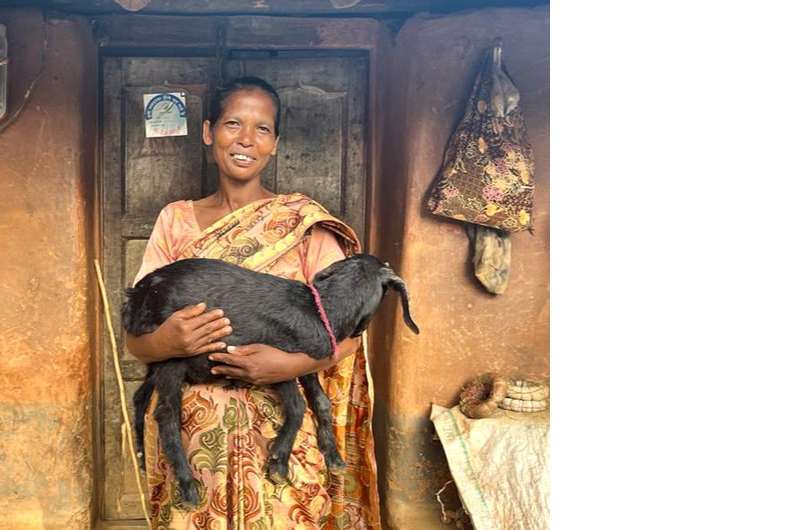
Like most families in Koyengsar, Bhengra and her family practised subsistence agriculture and depended on the forest for their living. “But our plight was worse because we own little land,” she says. Over the years, multiple challenges including erratic weather patterns, lack of irrigation facilities and deteriorating soil condition compounded their problems, depleting family income and forcing them to rely chiefly on the unsteady income of Bhengra’s husband who worked as a migrant labourer.
“Us samay na koi sanstha thi, na saadhan (That time, there was no organisation or a way),” Bhengra says. “We had to climb down the hill and walk 2-3 hours every day to the river to fetch water. “In winters, as the river dried up, growing food would become out of the question. There wouldn’t be anything left to even feed the animals, and many died,” she says. Either families would migrate, or take loans to survive,” she adds. Alcoholism was rampant and women were also forced to partake in the alcohol economy, with many, including Bhengra, making and selling hadiya (a local rice beer).
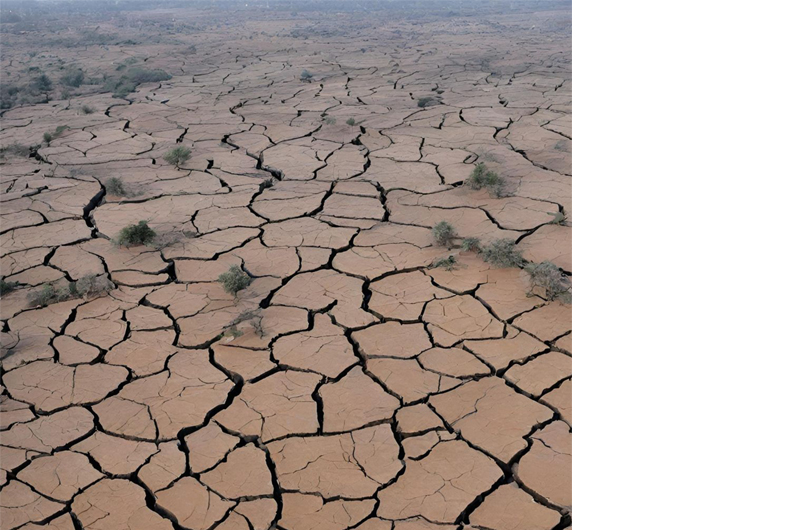
In 2015, Bhengra joined the women’s self help group (SHG) in her village, and through the group came in contact with WOTR. In 2019, she was introduced to theSustainable Livelihood Programme supported by Axis Bank Foundation. It proved to be the turning point in her life. The programme, implemented in 66 villages in Jharkhand and 21 villages in Telangana from 2019 to 2023 focused on providing support for income generation to families like Bhengra’s through integrated community-based interventions and assistance in agriculture, livestock, non-timber forest produce and water resource development.
In India, where more than half the population still depends on the vagaries of weather for farming, and where degraded ecosystems and climate change have jeopardised farm-based incomes, the programme singularly focused on helping marginalised communities living in some of India’s remote regions to diversify their incomes into non-farm sectors to boost ecological stability and economic security. With a loan from her SHG, and support and livelihood training from the project, Bhengra got 100 ber (jujube) trees on lease and started cultivating lac along with high-value crops. She also started rearing poultry, goats and pigs as a tertiary activity. Within a matter of a year, her family’s income skyrocketed. Today, with a steady annual income of more than Rs 3 lakh through lac cultivation alone, Bhengra’s household is one of the most enterprising ones in Koyengsar.
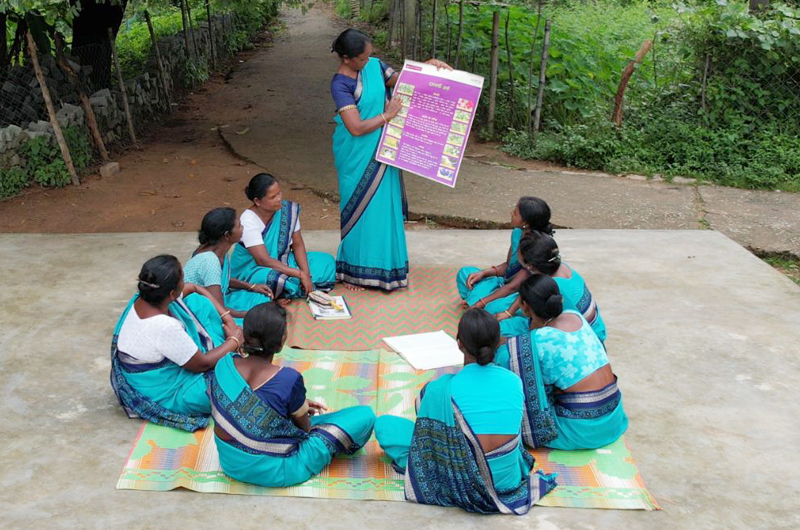
Like Bhengra’s family, many others have become prosperous by pursuing additional livelihood options. “Earlier, there was barely anything left to save, and families had to move to cities. Now, every household earns at least a lakh annually from growing lac alone. There is no deprivation,” says Anuj Munda, a resident of Rumutkel, another village where the programme was implemented. Focused on creating long lasting sustainable impact through community-led participation, the programme began in 2019 with communities reacquainting themselves with lands they had lived on for years.
The first thing they learnt about were its contours. “Gaon ka naksha nai tha isse pehle humare paas (There was no map of the village with us before this),” says Munda. Over weekly sessions with experts from WOTR, the community participated in drawing maps of their villages. They learnt about the hydrology of their land, and its topography. “Nakshe se zameen ke baare mein samajh aaya. Apni zameene kitni hai, kaisi hai (With the map, we understood about our land – how much land we have, and how it is),” Munda says. For example, villagers in Rumutkel learnt that there was only 30 per cent of garha don or fertile lowland in their village. The remaining 70 per cent upland (tanr) land was largely unfit for agriculture. Soil tests revealed that the soil in the area was acidic. “Isse samajh aaya ki zameen jaisi hai, uske hisaab se hi kheti karni chahiye (From this we understood, as is the land, so you should farm,” he adds.
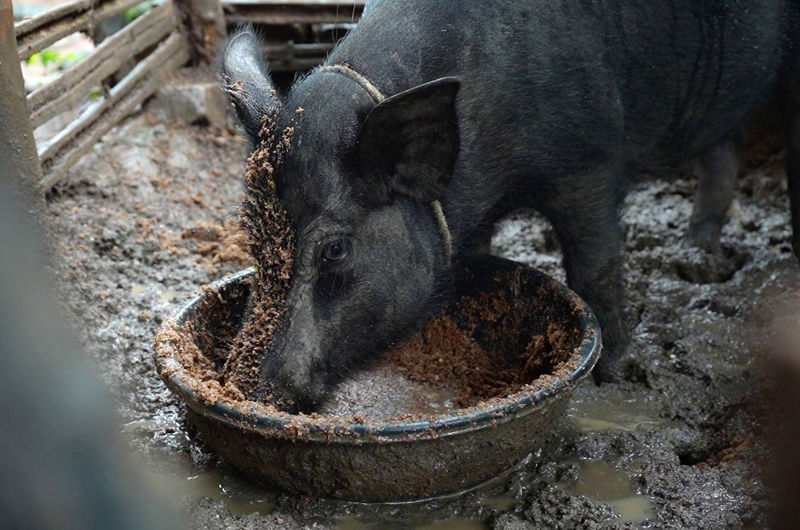
The community also learnt about their land’s water potential and worked towards increasing it by undertaking watershed development works. “In 2019, the lockdown was induced. At that time, with assistance from WOTR, we worked to increase the depth of the water bodies. We dug wells and repaired farm ponds,” says Birsa Pradhan, a resident of Rumutkel. The communities were also encouraged to undertake drip irrigation on their farms, and provided pumps to help draw water.
As irrigation facilities improved, the community started exploring new crops to cultivate. “We attended training, and went for exposure visits, where we learnt scientific ways of cultivating rice, lac and vegetables,” Pradhan adds. In addition, villagers were provided assistance and support to take up other income-generating activities. For example, in the 66 villages in Jharkhand where the project was implemented, cultivating lac, a high-value non-timber forest product, had been a traditional practice that was never exploited for its income-generating potential.
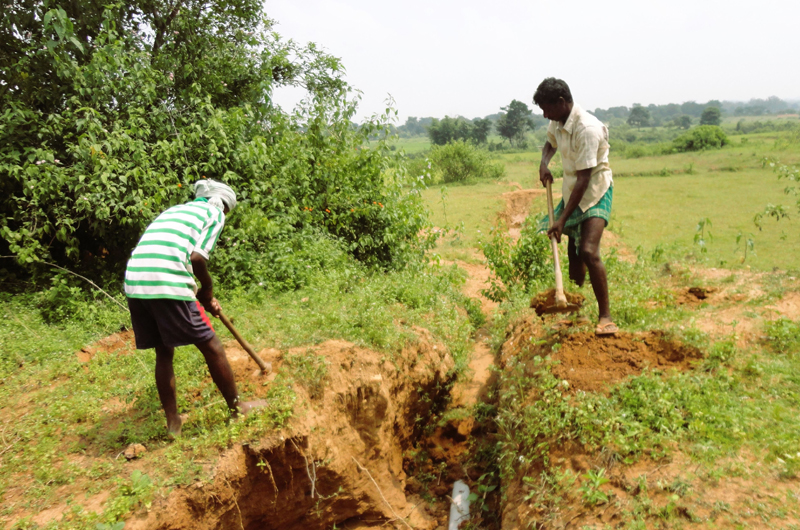
As part of the project, villagers in these parts received technical training on scientifically cultivating lac. They also received training and support to undertake other livelihood activities like beekeeping, animal husbandry and fishing. “Jis gaon mein jis cheez ki kami thi, wo dilaya,” (Wherever whatever kind of assistance was needed, it was provided, Bhengra says.
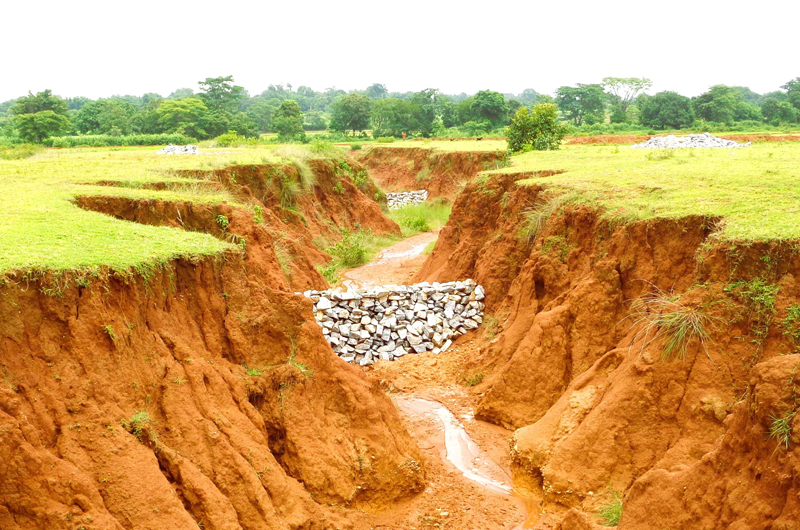
For example, in Otongonda, another largely tribal dominated village in which the project was implemented, the community was given training and assistance to rear pigs and goats, a traditional livelihood source that also doubles up as an income source for emergencies, in the village. “Contributing some money, I received two goats from the project in 2019. Now I have 15. Earlier they would die due to some disease or the other, but that is no longer the case,” says Samay Purty, 56, from Otogonda Village.
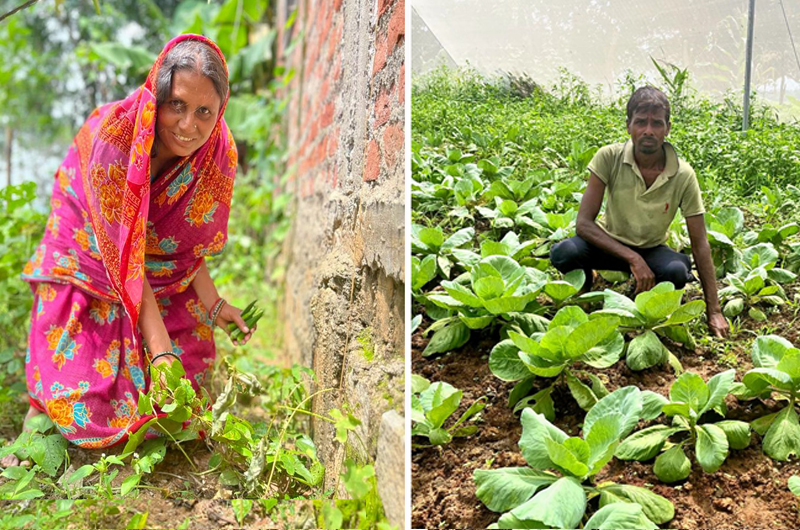
In Ganaloya, another village, provision of support, seeds and know-how enabled 38-year-old Savitri Kumar to raise her own kitchen garden. In Biramkel, the provision of a poly house to undertake high value vegetable farming enabled 35-year-old Sugreev Manjhi to raise his income from a few thousands to above a lakh (rupees). “The biggest thing was exposure and training,” Bhengra reiterates. “That is what made the difference,” she says
(Courtesy: Watershed Organisation Trust/ WOTR)


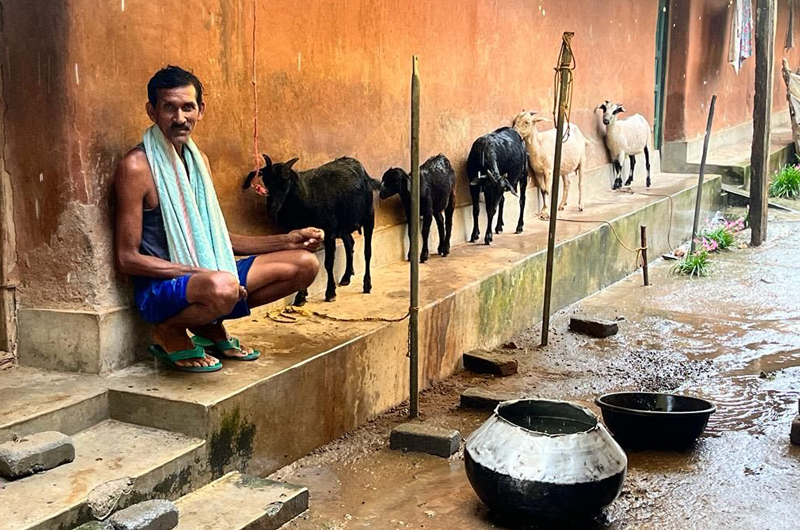
 from Webdoux
from Webdoux